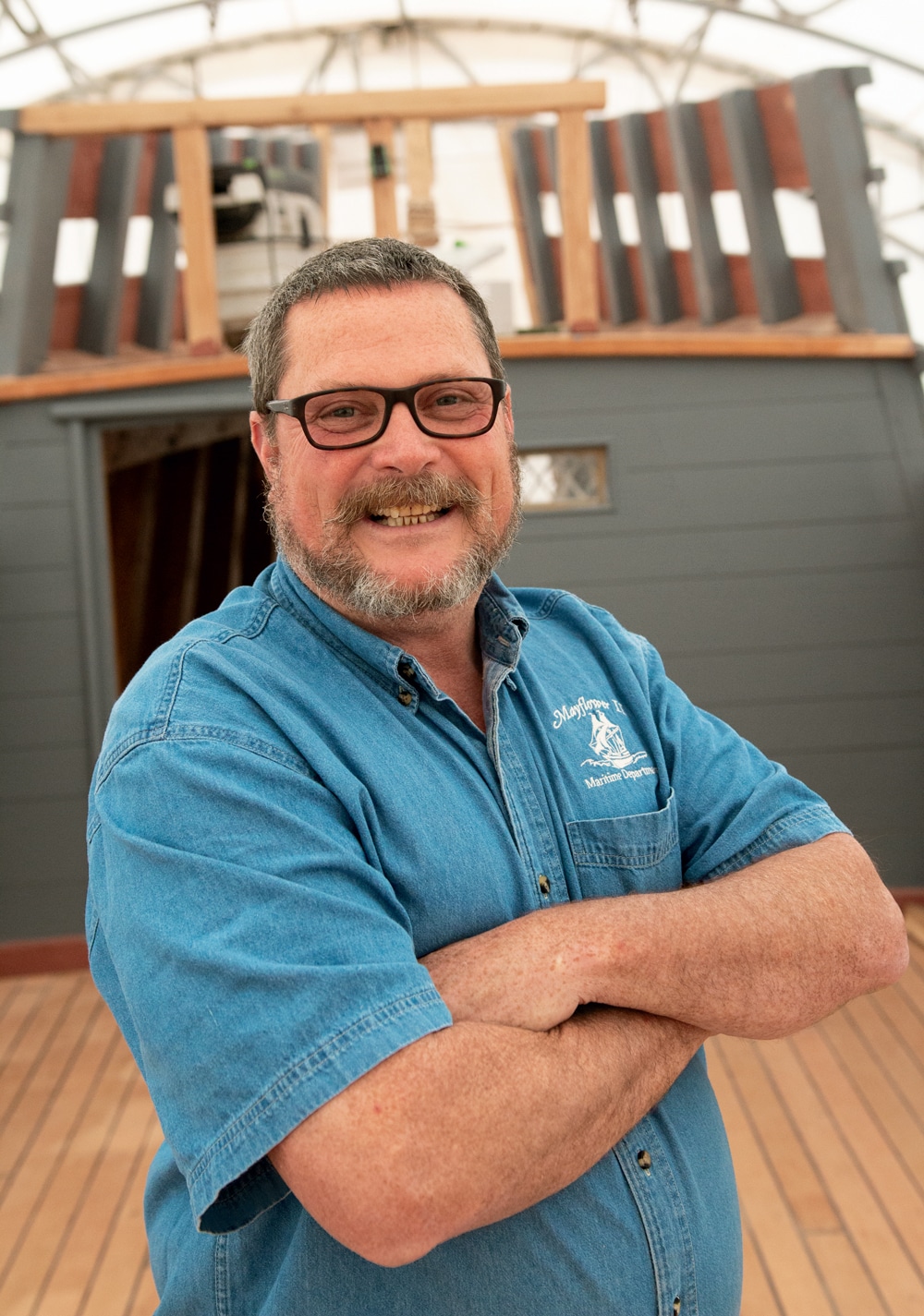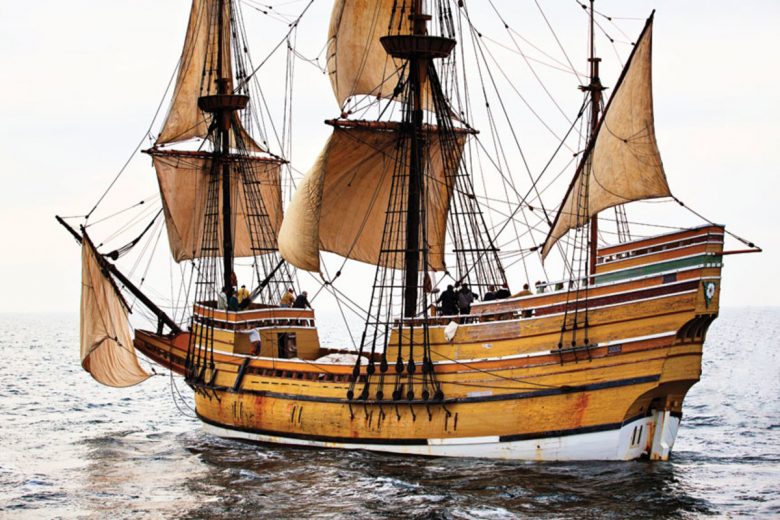
As a Massachusetts kid, Whit Perry explored the <i>Mayflower II</i> on field trips to Plimoth Plantation. Today he’s helping ensure that future generations can experience this one-of-a-kind replica, too.
Photo Credit: Ian Aldrich[caption id="attachment_156321" align="aligncenter" width="1000"]
 Some thoughts from Plimoth Plantation ship restoration expert Whit Perry.[/caption]
Some thoughts from Plimoth Plantation ship restoration expert Whit Perry.[/caption]
“From an early age, working on boats and fixing them up felt like a natural thing to me. The more I did it, the more I got interested in doing more of it.”
—
“My wife and I got married on Squam Lake’s Church Island. She rode out in my family’s 1927 Fay & Bowen, a gorgeous 27-foot long-deck launch. This was 1986, and a guy saw me working on the boat and asked if I’d restore his. I was like, ‘Really? You’re going to pay me to work on a boat?’ That’s how it all started.”
—
“When they started planning to restore the Mayflower II, the folks at Plimoth called my old boss at Jamestown to see if he knew anyone who could handle a restoration like this. I immediately put up my hand: Pick me, please pick me! To have a chance to restore something like this at such a large scale is the culmination of my career.”
—
“Besides just having a ship to look at and talk about, we’re keeping alive the old-time crafts. Listen to that [Perry points to the yard, where a shipwright is tapping oakum, a traditional caulk, between the Mayflower II’s planks]. That’s a sound that has been ringing out over shipyards for hundreds of years. And I guarantee you the mallet he’s using is at least a century old.”
—
“When we’re done, we’ll have replaced around 75 percent of the ship. But you can’t just go down to the local Home Depot to get the lumber. All this other history went into making this project happen. We repurposed the beams from a pier in Groton, Connecticut, that was built in 1897; the wood is this beautiful longleaf yellow pine that you really can’t find anymore. The trees were probably saplings when the Pilgrims came over. The white oak we used for some of the other planking came from a managed old-growth forest in Denmark. The boards were three inches thick, two feet wide, and 40 feet long. No knots, no defects—the quality is unheard of for anything you could get domestically. I keep telling the younger guys, ‘You’ll probably never see wood like this again.’”
[caption id="attachment_157721" align="aligncenter" width="780"] Mayflower II[/caption]
Mayflower II[/caption]
—
“It’s hard not to marvel at what those original Mayflower passengers went through to get here. Sometimes I’ll stand on the [midlevel] deck of the ship and think about the 102 people who had to sleep in that little space during their 66-day journey. They had to make their way on this small boat as they sailed across the Atlantic to a new life they knew nothing about. But when you’re on the boat and start to sense what life must have been like for them, you begin to appreciate their wants and needs to look for something better.”
—
“We have access to knowledge and technology they just didn’t have when they built the Mayflower II in 1957. Back then, the wooden boat renaissance was still a couple of decades away. They were used to building steel boats. Guys had to be pulled out of retirement to do the work. Now, we’ve got nearly 50 years of preservation history to draw on. We’re documenting everything and making improvements where we can, so that in 60 or 80 years, whenever the ship needs another overhaul, the next crew will be able to see what we did and go, ‘These guys knew what they were doing.’”













